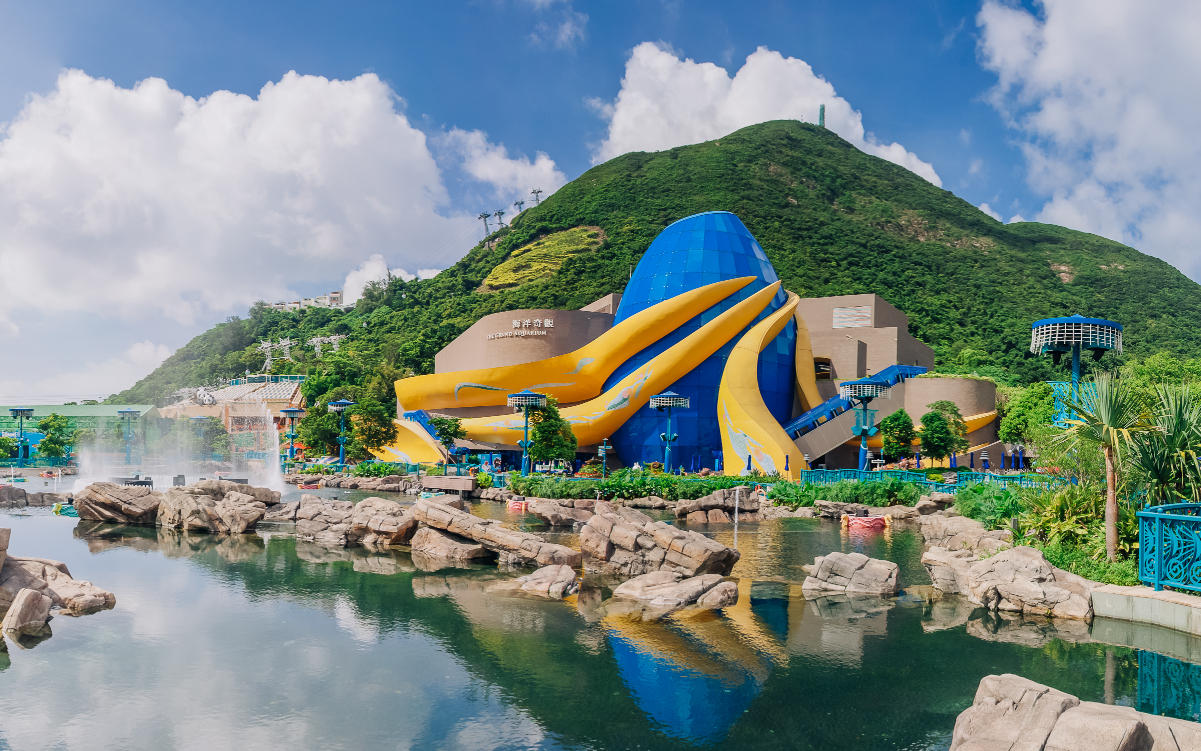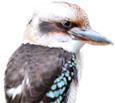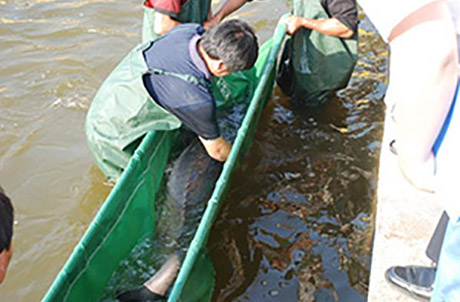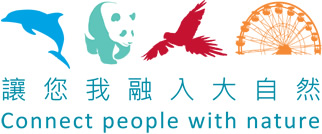(Hong Kong – 15 May 2008) Out of the five Chinese Sturgeons, a pre-historic and protected endangered fish species, that will be presented to Hong Kong Ocean Park by China’s National Aquatic Wildlife Conservation Association (the Association), the two largest ones, each measuring over two metres in length, have arrived at the Park yesterday (13 May) noontime, after a 16-hour journey from Xiamen. They are adapting well and are in good condition.
These two huge Chinese Sturgeons are available only at the Yangtze River Fisheries Research Institute of the Chinese Academy of Fishery Sciences, and the Association led the selection and delivery. The Association will also spearhead the presentation to Ocean Park of three more Chinese Sturgeons from the Beijing Aquarium on 19 May. All five Chinese Sturgeons will make their public debut at Ocean Park’s Atoll Reef in mid-June, after completing a month-long quarantine.
Ocean Park’s Curator of Aquariums, David Lai, said, “Scientists are very keen to study the Chinese Sturgeon species, as the species will develop in fresh water, and migrate to the oceans upon adulthood. But they will swim upstream to return to fresh water for breeding. The two Chinese Sturgeons have begun salt water acclimatization a few weeks ago in preparation for the trip to Ocean Park. We have dispatched two of our aquarists to Xiamen a few days ago to escort these fish. (See Picture 1) Two researchers from the Yangtze River Fisheries Research Institute joined the team and they will work with Ocean Park on husbandry issues. The whole process went smoothly and took 16 hours to complete. The aquarists monitored the fish throughout the journey and also checked the water temperature and salinity at regular intervals,” Mr Lai said. (See Picture 2)
He continued, “Currently, the two sturgeons are in quarantine together and will continue to be acclimatized to a salt water environment, which Atoll Reef has. From observations made of their behavior in the first 24 hours, we’ll say they’re adapting very well.”
Mr Lai said that the two sturgeons were selected because of their enormous size, which will be an impressive sight for many Park guests. The two sturgeons are both 10 years old, and belong to the first generation of Chinese Sturgeons bred by the Yangtze River Fisheries Research Institute.
Three more Chinese Sturgeons will be presented to Ocean Park by the Beijing Aquarium, which will hold a Farewell Ceremony Media Event at its facility on 19 May. The fish will be flown to Hong Kong following the ceremony. All five sturgeons will be unveiled for public viewing at the Park’s Atoll Reef in mid-June.
About Ocean Park
Ocean Park is Hong Kong’s unique homegrown theme park with a heritage of delivering family fun and fond memories. Since its opening in January 1977 as a non-profit organization, Ocean Park has developed itself to be a world-class attraction connecting people with nature, and recognized for its animal husbandry, research and relationship with the community. Over 85 million people have visited Hong Kong's premier park since its inception and Ocean Park has remained committed to offer adults and children experiences that blend entertainment with education and conservation. Part of the proceeds from the Ocean Park admission tickets and some retail items will go to Ocean Park Conservation Foundation, Hong Kong to support its wildlife conservation projects.









